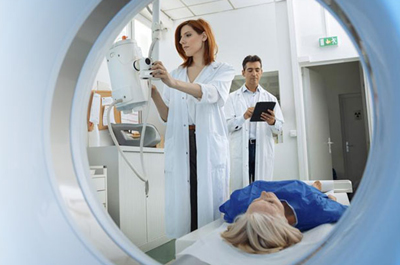PET-CT

PET-CT PROCESS
In diseased states, the composition of an individual’s tissues and cells changes. In cancer, for example, cells multiply at a much faster rate than normal cells by feeding on glucose.
If an individual has cancer or cancer is suspected, a nuclear medicine specialist performs a PET scan to see exactly what is going on inside that person’s body.
During a PET scan, a patient is injected with a very small amount of a radiotracer such as fluorodeoxyglucose (FDG), which contains a radioactive form of glucose. The radiotracer travels through the body and is absorbed by the tissues or the organ being studied. The patient then lies down on a scanner table and the PET scanner receive signals emitted by the injected radiotracer. Using these signals, the PET scanner measures glucose activity and a computer creates an image out of the data received.

PET-CT Patient Preparation
- Nothing by mouth (NPO) except water for 6 hours prior to your appointment.
- The patient may only drink water that morning. Take all necessary medicines only with water.
- Low carbohydrate intake during last night’s meal.
- Refrain from exercise for 24-48 hours prior to the test.
- If you are diabetic, and on insulin, ask for an afternoon appointment. (to have early breakfast)
- Bring insulin and all medicines to the clinic.
- Please inform us if you are claustrophobic. Bring a ride/driver along.
- Although the actual scan time is typically 20 minutes, expect to spend approximately 2 hours at our facility for your PET-CT scan.
- Wear warm clothes, since the scanner room is cold.
